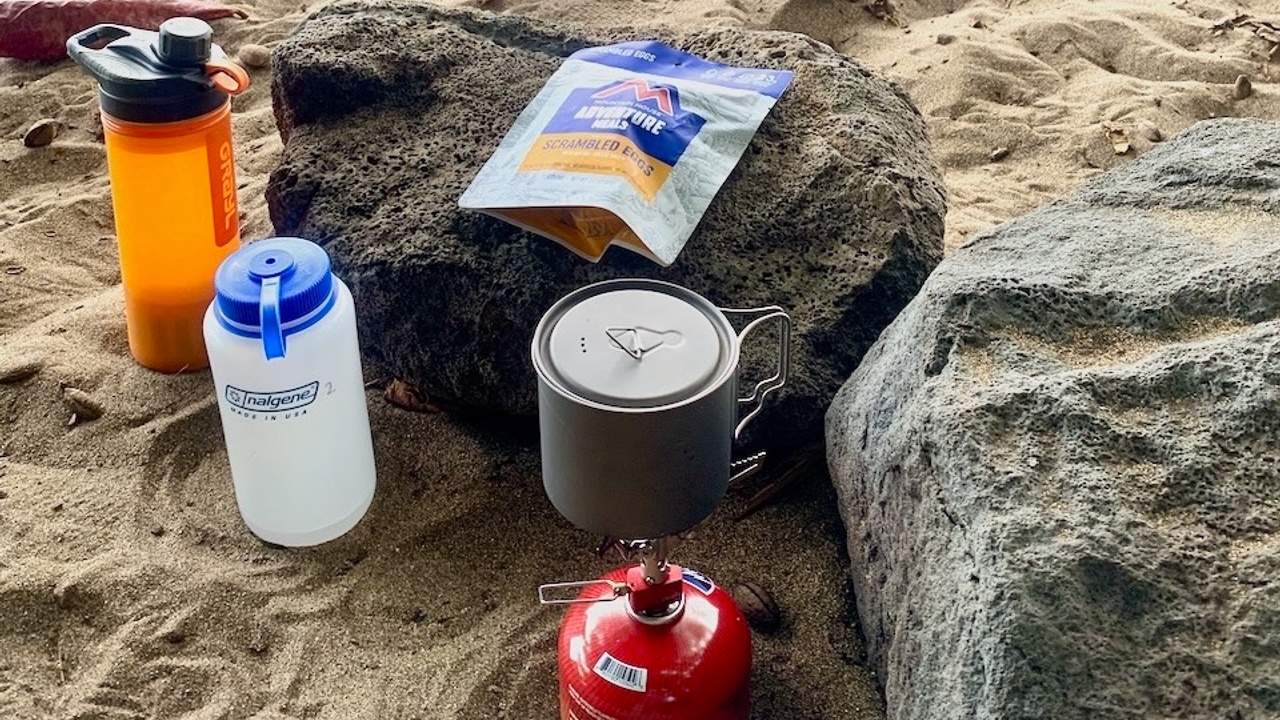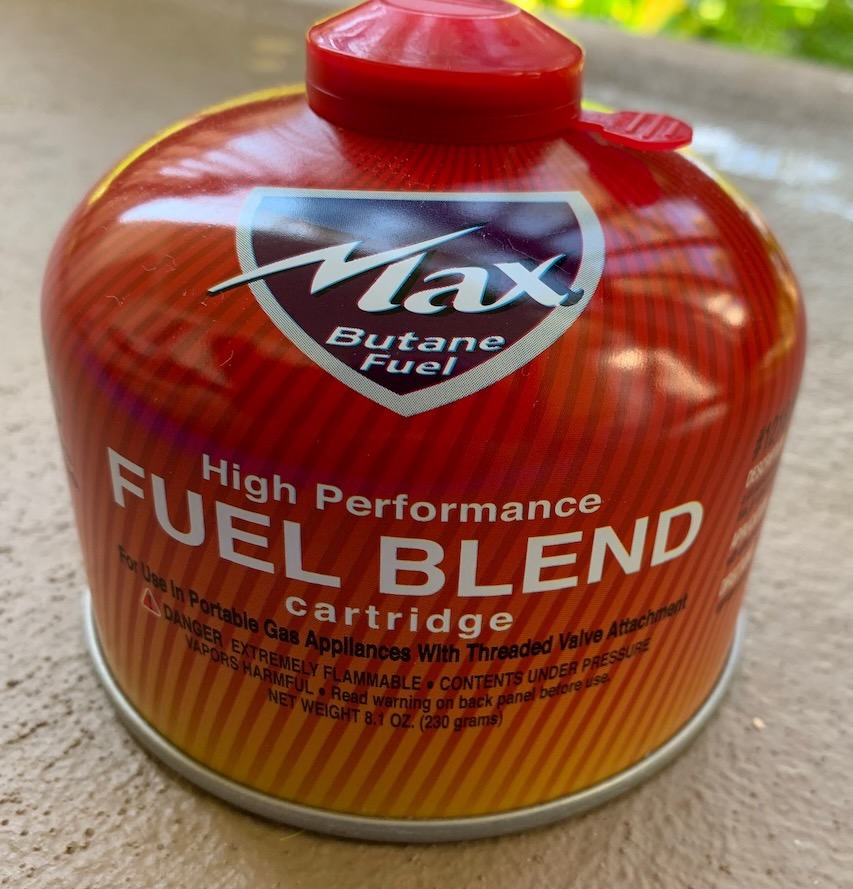
Nobody wants to run out of gas for their camping stove. That would really mess with meal prep and could even result in a shortened Kalalau adventure. At the same time, schlepping too many cartridges is also not fun. So how do you know how many you’ll need?
Here’s a way to make sure:
1. Figure out how many “boils” you’ll need.
Let’s say you go for 3 days. That could mean 2 warm dinners + 2 warm breakfasts + 4 cups of coffee (very important!) = 8 boils total, assuming you’re using the same cup or pot for meals and hot drinks. You’ll also want to consider the size of your group, so each meal could mean 2 boils, for example. Also, factor in whether you’ll use boiling water as a way to treat water to make it potable (see Water Treatment). This would obviously increase the number of boils needed. To be on the safe side, consider a 20% safety cushion, so in this case, I would round up to 10.
=> Needed boils
2. Weigh your canister.
Get a cheap digital scale and weigh your fuel canister - without the stove attached. (Mine was 365 g full.)
=> Initial weight
3. Run a test boil.
Fill your cup/pot with as much water as you’ll expect to use for a typical boil and use the same stove you’re planning on bringing. As much as possible, keep other variables the same as well, such as altitude (at higher altitudes, stoves take more time) and ambient temperature. Make sure you boil the water as long as you would on the trail (most recommend at least a 1-minute rolling boil at lower altitudes) before turning it off.
4. Weigh your canister again.
The difference between the two weights is how much gas a single boil consumes, e.g. 365 g - 361.9 g = 3.1 g (of fuel per boil). Your number will obviously be different.
Current weight - initial weight = weight of fuel per boil
5. Subtract the empty weight of the canister from your last measured weight.
So if your canister weighs 361.9 g and the empty weight (as indicated on the canister as “net weight”) is 230 g, you have 131.9 g of fuel left (remaining fuel).
Current weight - empty weight = weight of remaining fuel

6. Divide the remaining fuel weight by your weight of fuel per boil (from step 4).
This will give you the number of boils left in your canister, so 131.9 g / 3.1 g per boil = 42.5 boils (remaining boils).
Weight of remaining fuel / weight of fuel per boil = number of remaining boils
7. If you don’t have fewer than the required boils left, get another canister (or more).
So if you need 10 boils total and your canister’s remaining capacity is at 10 or above, you’re set.
Number of remaining boils >= needed boils ?
8. (Optional) Calculate the fill % for your cartridge
If you want to know exactly how full your cartridge is and you know how much it weighed when it was full, you can calculate
(Current weight - empty weight) / (full weight - empty weight) * 100 = % full.
I hope this process makes intuitive sense.
From my own experience, I’ve used a single canister for two 4-day solo Kalalau adventures as well as another short overnight hike (with both warm breakfasts and dinners + coffee twice a day minus first and last day) and still had 8% of fuel left. Your mileage will vary, but my point is: a single cartridge can go a long way.
Also, and this is good to know: There are usually half-empty cartridges left behind in Kalalau camp on what’s called the “free table”. So if you do run out unexpectedly, you can probably make do with a canister from there if necessary. That said, I don’t endorse leaving trash or other supplies behind, so I encourage you to do the same.
Where do you get gas on the Island?
Since you can’t bring gas canisters with you on the plane, you’ll have to buy them on the island.
My go-to destination is the ACE hardware store in Lihue. They usually have an ample supply of butane fuel cartridges on hand. (Call them if you want to be on the safe side.)
Apart from that, check out the gear rentals for alternative sources. (Even some of the folks providing transportation can hook you up with fuel in a pinch.)
Lastly, don’t forget to pack a lighter, matches, or firestick, so you can actually light your stove. Check out the gear page for recommendations.
Hopefully, this post was helpful and gave you confidence in knowing you’ll have enough fuel!
BTW: There is a serious problem at Kalalau Beach related to fuel canisters. Please read this article to make sure you don't become part of it.
Stay connected with news and updates!
Join our mailing list to receive the latest news and updates from our team.
Don't worry, your information will not be shared.
We hate SPAM. We will never sell your information, for any reason.

